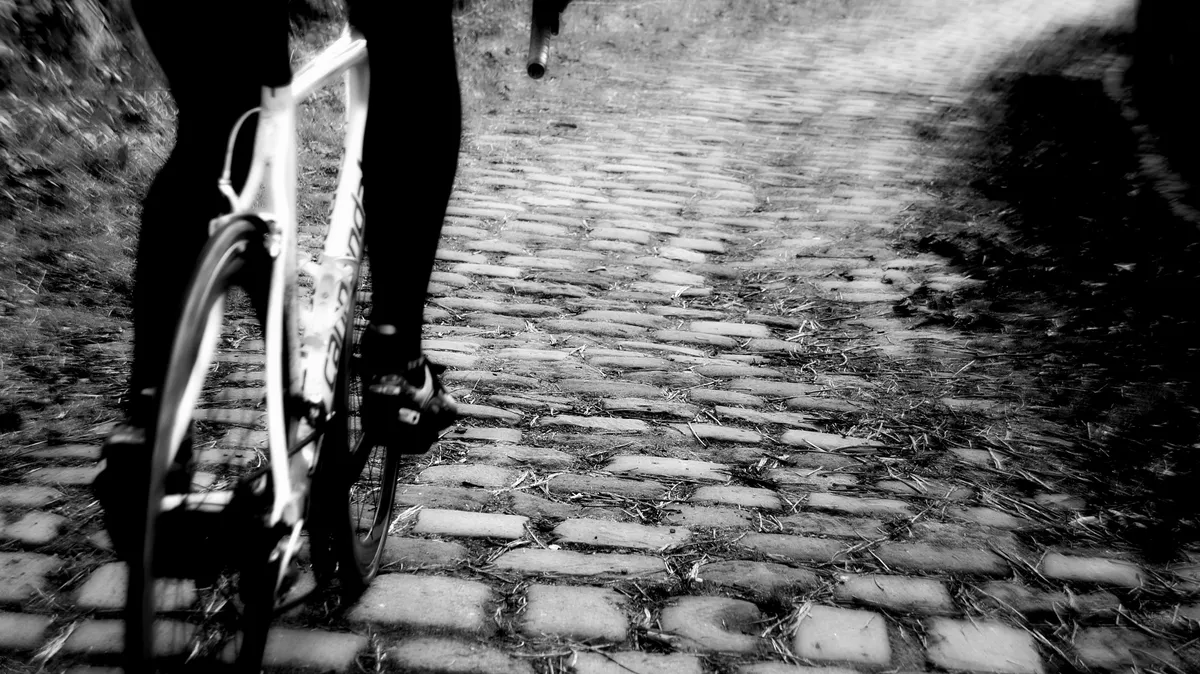As the energy required to power on-bike devices, such as LED lights and GPS computers, has decreased, the potential to employ novel, discreet solutions to charge them has increased.
This paper by students at Université de Cergy-Pontoise, first published in 2008, describes the potential to fit a piezoelectric generator to a bike that would utilise the vibrations caused by riding over imperfect surfaces to charge electronic devices on a bike.
- Shimano electronic gears could soon charge themselves
- Shimano 14 speed has been hiding in plain sight since '99
A piezo-what?
A piezoelectric material has the ability to transform mechanical stress into electrical potential — in other words, by flexing or otherwise deforming a piezoelectric material, an electric current is produced. A helpful explainer on the phenomenon can be found here.
Quartz and Lead Zirconate Titanate are the most common piezoelectric materials that you’re likely to have encountered, the former being used in spark lighters for stoves and BBQs.
The mechanical stresses under which a piezoelectric material will produce an electric current includes everything from blunt force to repetitive stretching. In this case, the students hoped to take advantage of the vibrations that a bicycle constantly experiences to charge electronic devices on a bike.
Where would piezoelectric chargers be located on a bike?
Piezoelectric generators work best when ‘tuned’ for the type of forces — in this case, constant vibrations — that will be encountered.
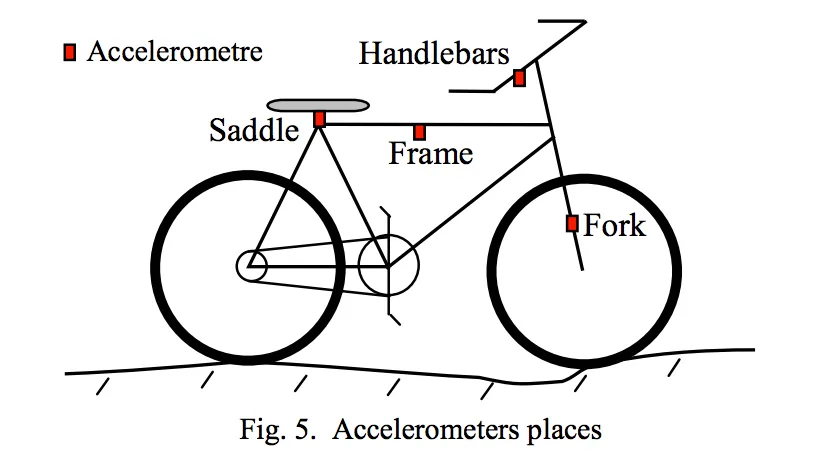
To determine where these vibrations are most intense, four accelerometers were strapped to a bike that was then ridden over four different surfaces — a clay track, a bike path, a broken road and cobbles — at 21km/h.
Unsurprisingly, the intensity of the vibrations experiences on the different surfaces was drastically different, but it was determined that in general, the forks experience the most intense vibrations, 80 percent of which occur in the 10-30Hz range.
What would this generator look like?
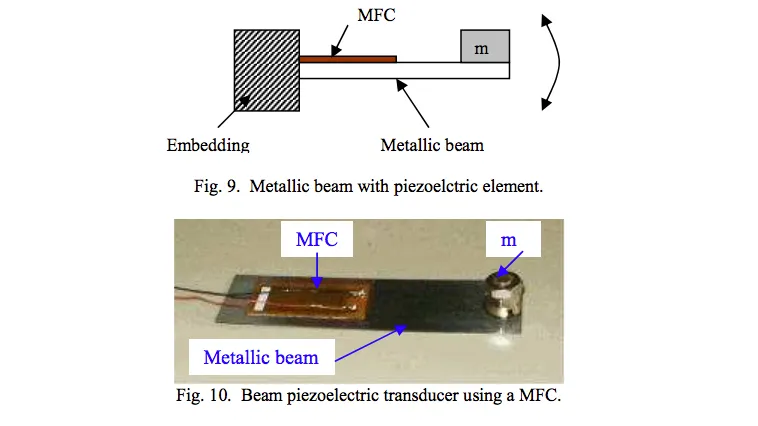
The students then designed a ‘beam-type piezoelectric generator’ that would work best within this range of vibrations.
This generator took the form of a strip of ‘micro-fibre composite’ piezoelectric material stuck to a metallic beam. A mass of 5.32g was then added to the end of this beam to adjust the natural frequency of the generator to 12.5Hz and to “amplify mechanically the deformation of the piezoelectric current”. The other end of this beam is clamped solidly.
So does it work?
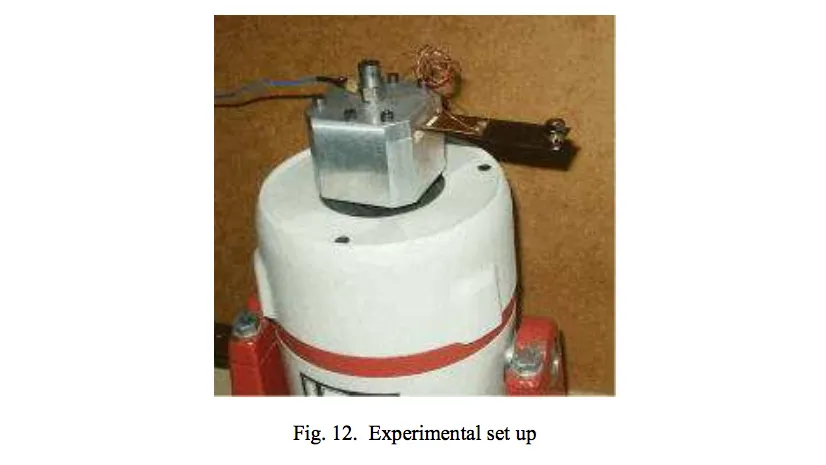
Unlike some of the other patents and papers I’ve written about, this one is actually backed up with real-world testing.
The students first tested the generator onboard a shaker in a lab that was used to simulate the types of vibrations typically experienced on a bike.
Wobbling at a purely sinusoidal (my new favourite word) rate of 12.5Hz, the generator produced 3.5mW of power under these ideal conditions.
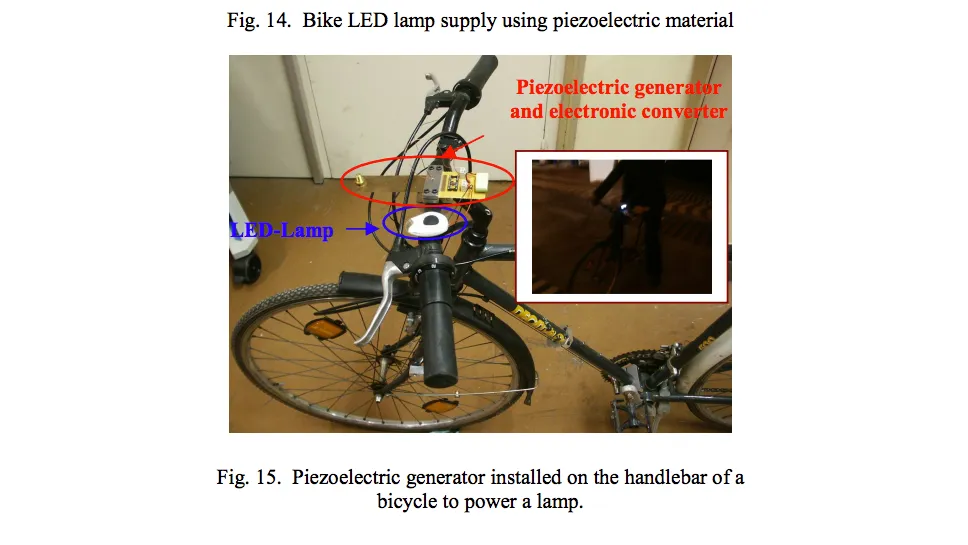
Mounted onto the handlebars of a bike, the generator was able to power a small LED lamp, though the power dropped off significantly when the bike was ridden on smoother surfaces.
3.5mW doesn’t sound like very much...
3.5mW is an incredibly small amount of power compared to the 1.5-3W required to light a modern dynamo light.
However, the paper suggests that in the future, certain patented piezoelectric technologies that — if they became widely produced and thus more affordable — could potentially produce the power required for a modern lighting system.
I don’t pretend to be an expert on piezoelectric technology, but I can only imagine that in the time since this paper was written in 2008, the technology has improved significantly and for all we know, this could be just around the corner.
Even if a piezoelectric generator couldn’t solely power an electronic ecosystem (urgh, I still hate myself for using that phrase), the paper also suggests that rather than solely power electronic devices, one could at least be used to improve battery life.
Hasn’t someone else already thought of this?
There are all sorts of interesting piezoelectric projects — the majority of which are shoe-based phone chargers (yes, really) — and ‘energy-harvesting kits’ floating about online, but as far as my research has shown, there’s no other on-bike charging units that utilise the piezoelectric phenomenon.
Where could this technology go?
I’m a real sucker for the idea of wholly integrated on-bike electronics, particularly if it makes bikes more ‘self-sufficient’ and accessible for the everyday rider — the value of being able to jump on a commuter bike without worrying about charging lights cannot be overstated.
And while modern dynamos are lighter than ever, increasingly compact and very efficient, they are still far more complicated than ‘a magic wobble-stick that makes the electrics’, and I’m all for anything that makes a bike less complicated.
The paper suggests housing the entire generating unit within a box that could be a retrofitted to any bike, but this is bound to be a relatively bulky solution.
Thinking totally out of the box, I could see this sort of solution embedded more directly into a bike, perhaps in high stress areas of the frame or even into the rim bed.
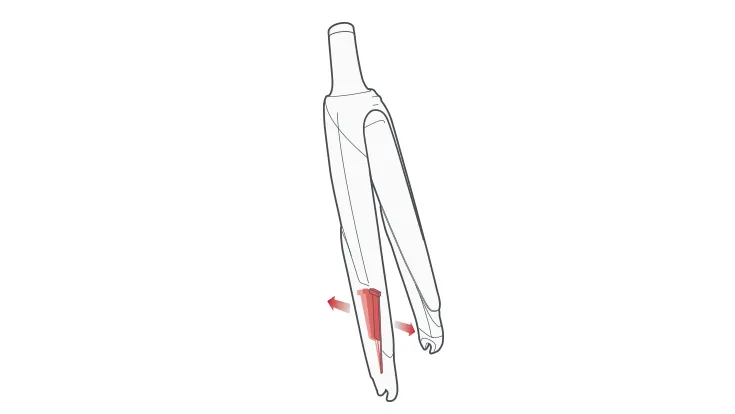
Another blue-sky future-stuff idea that popped to mind is the potential to use tuned mass damping rods — as we’ve seen before in Time’s Aktiv equipped bikes — that could act as a beam-type generator as seen here.
So will rumblin’ soon charge my phone?
This one is a little harder to predict than the more easily implemented dynamo-equipped jockey wheel I discussed previously. Neatly integrating some kind of piezoelectric charging device into a frame would be a hard task and one I think few manufacturers would be willing to undertake with the technology as immature as it is now.
Regardless, it’s exciting to think about where on-bike electronic integration will go in the future, but I hope we see more innovative solutions like this pop up in years to come.
Would you like to put your bike’s vibrations to good use? Or have tubeless plus-tyres made for a ride too cushioned to harvest any kind of usable power? As always, leave your thoughts in the comments below!
